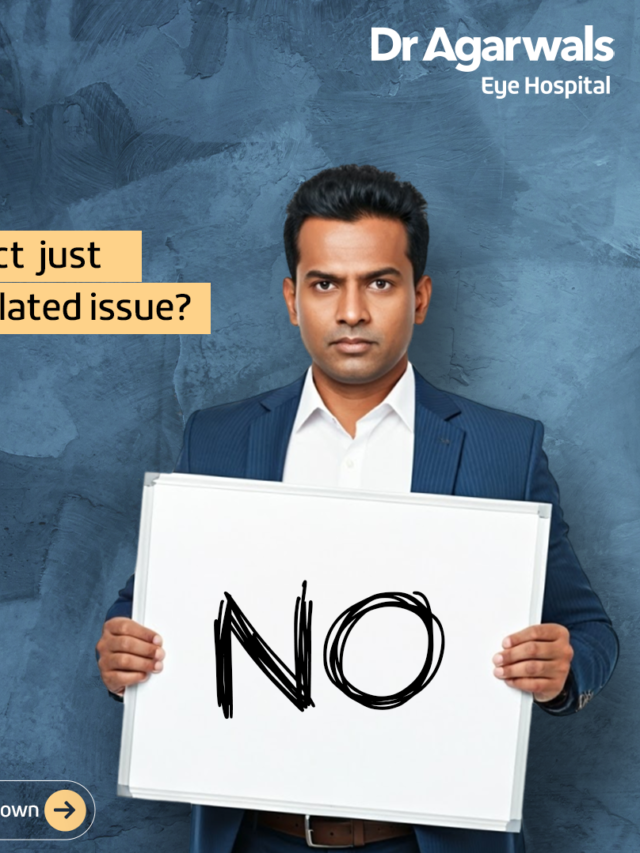Ever Had That Red, Irritated Eye? You’re Not Alone!
Picture this: You wake up one morning, and as you glance in the mirror, something’s off. Your eye is red, itchy, and irritated. A sticky discharge makes it hard to blink, and you suddenly realize—uh oh, you’ve got pink eye! Whether you’re a parent rushing to Google to figure out what’s going on with your child’s eyes, or you’re battling the discomfort yourself, কনজেক্টিভাইটিস is an all-too-familiar and annoying experience for many of us.
But here’s the thing: Not all cases of pink eye are the same, and what works for one person might not be the solution for someone else. So, how do you know which type you’re dealing with and what you should do next? In this guide, we’ll explore the ins and outs of conjunctivitis, decode its causes, and reveal some practical tips for managing it—so you can be back to feeling and looking your best in no time!
Types of Conjunctivitis
There are four primary types of conjunctivitis, each triggered by different causes:
Viral Conjunctivitis
- Caused by viruses like adenovirus, which spreads easily through direct contact.
- Symptoms include watery discharge, redness, and itching.
- It often accompanies a common cold or respiratory infection.
Bacterial Conjunctivitis
- Caused by bacteria such as Staphylococcus বা Streptococcus.
- Symptoms include thick yellow or green discharge, redness, and eyelid crusting.
- Requires antibiotic treatment for effective management.
অ্যালার্জিক কনজেক্টিভাইটিস
- Triggered by allergens like pollen, pet dander, or dust mites.
- Symptoms include itchy, watery eyes, swelling, and redness.
- Managed with antihistamines and avoiding allergens.
Irritant Conjunctivitis
- Caused by exposure to irritants like smoke, chemicals, or chlorine in swimming pools.
- Symptoms include redness, burning, and excessive tearing.
- Flushing the eyes with clean water and avoiding irritants help in recovery.
Understanding the type of conjunctivitis is essential for managing the condition properly.
Viral Conjunctivitis
Viral conjunctivitis is highly contagious and is caused by common viruses such as adenovirus, which can also trigger the common cold. Symptoms include redness, watery discharge, and itchy eyes. Viral conjunctivitis typically begins in one eye but can easily spread to the other eye through contact.
While antibiotics are ineffective against viral conjunctivitis, this form of pink eye usually clears up on its own within a week to 10 days. During that time, supportive care, including using cold compresses and lubricating eye drops, can help alleviate discomfort.
Bacterial Conjunctivitis
Bacterial conjunctivitis is caused by bacteria like Staphylococcus aureus, Streptococcus pneumoniae, and Haemophilus influenzae. This type of pink eye often results in thick, yellow, or greenish discharge and can cause the eyelids to stick together, particularly in the morning. It is contagious and can spread through direct contact with an infected person or contaminated surfaces.
Unlike viral conjunctivitis, bacterial conjunctivitis requires treatment with antibiotic eye drops or ointments to prevent complications and speed up recovery. If untreated, bacterial pink eye can lead to more severe infections.
অ্যালার্জিক কনজেক্টিভাইটিস
Allergic conjunctivitis occurs when the eyes come into contact with allergens, such as pollen, dust mites, pet dander, or mold. It is more common in individuals with other allergic conditions, such as hay fever or asthma. Symptoms include itchy eyes, watery discharge, and swelling of the conjunctiva, often accompanied by sneezing and a runny nose.
This type of conjunctivitis is not contagious. Treatment involves avoiding allergens and using antihistamine eye drops to reduce symptoms. For chronic allergic conjunctivitis, your doctor may recommend long-term strategies to manage your allergies effectively.
Irritant Conjunctivitis
This form of conjunctivitis occurs when the eyes are exposed to irritants like smoke, chlorine in swimming pools, or foreign bodies such as dust or chemicals. It is not contagious, but it can cause significant discomfort, including redness, tearing, and a burning sensation. Treatment usually involves flushing the eyes with saline solution and avoiding further exposure to the irritant.
Common Symptoms of Conjunctivitis (Pink Eye)
The symptoms of conjunctivitis vary depending on the cause, but typical signs include:
- Red or pink appearance in one or both eyes
- Eye discomfort or itchiness
- Watery or thick discharge
- আলোর প্রতি সংবেদনশীলতা (ফটোফোবিয়া)
- Swollen eyelids
- A gritty feeling in the eyes
- Crusty buildup on the eyelids or lashes, particularly in bacterial cases
It’s important to consult an eye care professional if you’re unsure about the cause of your symptoms, as some types of conjunctivitis can mimic other serious eye conditions, such as uveitis বা keratitis.
How is Conjunctivitis Spread?
Conjunctivitis spreads through:
- Direct contact: Touching infected surfaces and then rubbing the eyes.
- Airborne transmission: Viral conjunctivitis can spread through coughs and sneezes.
- Sharing personal items: Towels, makeup, and pillowcases can harbor the infection.
- Poor hand hygiene: Not washing hands after touching the face or eyes can spread bacteria and viruses.
What Are the Effective Treatment Options for Conjunctivitis?
Treatment depends on the type of conjunctivitis:
Treatment for Viral Conjunctivitis
- Usually self-limiting; symptoms improve within 1-2 weeks.
- Artificial tears and cold compresses for symptom relief.
- Avoid touching the eyes and maintain good hygiene.
Treatment for Bacterial Conjunctivitis
- Antibiotic eye drops or ointments to clear the infection.
- Proper eyelid hygiene to prevent spreading.
- Avoid sharing towels and pillowcases.
Treatment for Allergic Conjunctivitis
- Use of antihistamine eye drops and oral medications.
- Avoid known allergens to prevent recurrence.
- Use cold compresses to reduce swelling.
Treatment for Irritant Conjunctivitis
- Flushing the eyes with clean water.
- Avoiding exposure to irritants.
- Using lubricating eye drops for relief.
How to Care for Conjunctivitis: Self-Care Tips
করণীয়:
- Wash hands frequently to prevent spreading.
- Use a clean tissue to wipe away discharge.
- Apply a cool compress to soothe irritation.
- Avoid wearing contact lenses until the infection clears.
- Follow prescribed medications properly.
করবেন না:
- Avoid rubbing your eyes to prevent worsening the condition.
- Refrain from sharing towels, makeup, or personal items.
- Stay away from crowded places to avoid spreading the infection.
- Do not use expired eye drops or medication.
Conjunctivitis Recovery Time and What to Expect
Recovery time depends on the type and severity of conjunctivitis:
- Viral conjunctivitis: Usually resolves within 1-2 weeks without treatment.
- Bacterial conjunctivitis: Improves within a few days of starting antibiotics.
- Allergic conjunctivitis: Symptoms improve once allergens are avoided or treated.
- Irritant conjunctivitis: Resolves quickly once exposure to the irritant is eliminated.
Children and elderly individuals may take longer to recover due to weaker immune responses.
When Should You See a Doctor for Conjunctivitis?
Seek medical attention if:
- Symptoms persist for more than a week without improvement.
- There is severe eye pain, blurred vision, or sensitivity to light.
- Thick, greenish discharge is present.
- Conjunctivitis occurs alongside a high fever or flu-like symptoms.
Tips for Preventing Conjunctivitis (Pink Eye)
- Practice good hand hygiene by washing hands frequently.
- Avoid touching or rubbing your eyes.
- Disinfect commonly touched surfaces like doorknobs and phones.
- Do not share personal items such as towels, makeup, and glasses.
- Wear protective eyewear when exposed to irritants or allergens.
Conjunctivitis in Children
Children are more prone to conjunctivitis due to frequent hand-to-eye contact. Preventive measures include:
- Encouraging frequent handwashing at school and home.
- Avoiding shared toys and classroom materials that may carry bacteria or viruses.
- Seeking prompt medical attention if symptoms develop to prevent spreading to classmates.
Why Choose Dr Agarwals Eye Hospital for Conjunctivitis Treatment?
- Expert ophthalmologists with extensive experience in treating eye infections.
- Advanced diagnostic and treatment facilities.
- Personalized care and treatment plans.
- 24/7 emergency eye care services.
- Patient-friendly approach with high success rates in conjunctivitis management.




